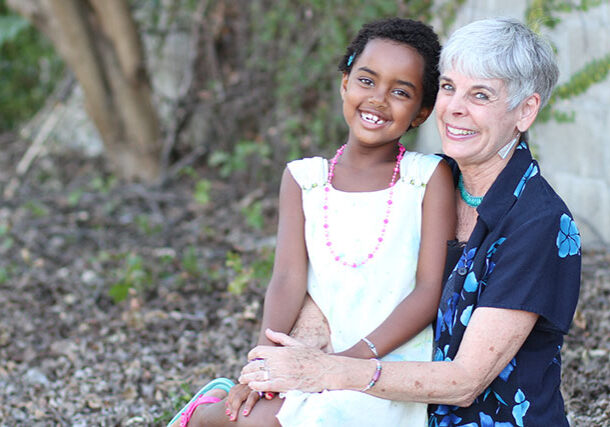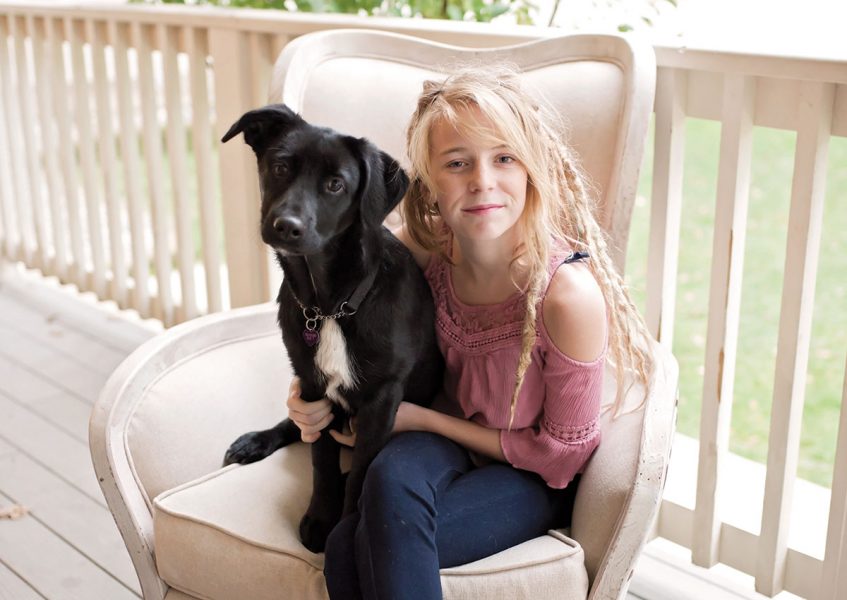Worldwide Epilepsy Awareness Day
Wear Purple On March 26th To Support Kaia And Others With Epilepsy
Kaia’s first seizure happened in fifth grade. Her mother, Rita Davis, had asked Kaia to go clean her room, but instead, Kaia began pointing to something unseen around the room. When Kaia collapsed on the floor, turned blue and began convulsing, Rita realized Kaia wasn’t playing a game.
Doctors told the family that one in five people who have an unexplained seizure will never have one again. Three months later, however, Kaia had a seizure at school, resulting in a broken nose. Soon, weekly seizures established the official diagnosis of epilepsy.
Epilepsy is a chronic disorder characterized by recurring, unprovoked seizures. According to the Epilepsy Foundation, epilepsy is the fourth most common neurological disease. One in 26 people will develop epilepsy at some point in their lives. Epileptic seizures, surges of electrical activity in the brain, interfere with a person’s control over his or over cognitive awareness, motor control or both. People with epilepsy experience seizures of varying frequencies and durations.
Kaia’s seizures come in three degrees. Grand mals, the most severe, send Kaia to the ground in convulsions for up to a few minutes. The less obvious, complex partials draw Kaia off balance and make her lean heavily to one side. Absence seizures, which Kaia’s family calls “glitches,” are short lapses of awareness lasting less than 30 seconds.
Seizures of all sizes present big challenges for people with epilepsy. Physically, grand mals present dangers such as head injuries or even drowning if a seizure happens in a pool or bathtub. Socially, Kaia’s “glitches” can earn taunts from peers and reprimands from adults for supposedly not paying attention. Kaia can’t remember anything just before, during or after a seizure. In fact, it often takes her more than 20 minutes after a grand mal seizure to understand where she is or recognize anyone.
At first, Kaia and Rita fought overwhelming fear. Seizures can happen at any time, in any place. “My struggle as a mother is letting Kaia live her life amid the unknown of when the next seizure will be,” says Rita. “I want to hover over her and protect her. But she’s an active girl and deserves to walk in every moment of who she is. I don’t want to hold her back because of fear of what may never happen. She’s a girl of confidence and perseverance.”
Confidence and perseverance certainly do describe Kaia. Despite the threat of seizures, 13-year-old Kaia’s hobbies include rock climbing, softball, snowboarding and skateboarding. She sets alarms to remind herself to do everything, like take her medications or feed Kito, her service-dog-in-training who will one day be able to sense oncoming seizures and cushion her falls. Though she admits being regulated by alarms is “not fun,” Kaia approaches it with a bit of humor, “When someone asks me to remind them to do something, I say ‘You’re asking the wrong person!’”
Epilepsy can cause feelings of embarrassment that lead to isolation. Kaia says, “I just want the whole world to know I have epilepsy so I don’t get made fun of when I’m wearing a life jacket as a 13-year-old or when I forget things. I want them to know epilepsy is not a mental illness. It’s not contagious.” To help battle isolation, Kaia and Rita are poised to start an epilepsy support group with a focus on youth in Shasta County, in partnership with the Epilepsy Foundation. In the meantime, Kaia and her family raise awareness for epilepsy through bracelets, ribbons and t-shirts. They also give and receive encouragement for living fully with epilepsy through PurpleforKaia Facebook and Instagram accounts. “You’ll hear a lot about the anxiety, depression and side effects,” Rita says, “and our family does not ignore those realities. But we choose not to come into agreement with the negative. We try to encourage others and pour more positive into our lives.”
Much of the positive comes from the family’s faith. “People ask me why Kaia isn’t healed if God answers all prayers,” Rita says. “God answers our prayers as we start to see a greater purpose in her life, being so confident, open, inspirational and active. Instead of having her perfectly healed years ago, I think she needed to continue this journey of epilepsy to give people – especially other kids – hope that epilepsy isn’t the end of your life.”
To support Kaia and others with epilepsy, search for PurpleforKaia on social media and wear purple on March 26th, Worldwide Epilepsy Awareness Day.
If you see someone experience a seizure:
- Lay the person on her side with something soft under her neck.
- Call 9-1-1 if the seizure lasts five minutes (three minutes in rural communities).
- As the person regains consciousness, maintain a calm voice and expression while explaining where he is and what happened.
Posted in: Community, Health & Nutrition
Comment Policy: All viewpoints are welcome, but comments should remain relevant. Personal attacks, profanity, and aggressive behavior are not allowed. No spam, advertising, or promoting of products/services. Please, only use your real name and limit the amount of links submitted in your comment.
You Might Also Like...

Prevention Against Lyme Disease is Every Month
Prevention Against Lyme Disease is Every Month Lyme disease is an infectious, bacterial disease transmitted to humans via a tick bite, but it can also be spread by mosquitoes, fleas […]
Growing Up at ScienceWorks – Interactive Museum Offers Play, Education And Life Experience
High school-age intern leaders at ScienceWorks Museum in Ashland, Oregon swap stories and play foosball in the break room between shifts. Some have been coming here for more than 10 […]
Surefire Ways To Connect Kids And Grandparents Via Technology
Do you love watching your kids interact with your parents? Grandparent relationships are special, but can’t always take place in close proximity. My children have never lived in the same […]

The Sandwich Generation: Balancing Child Care And Elder Care
In 1981, sociologist Dorothy A. Miller coined the term “sandwich generation” to refer to those who care for their aging parents while also supporting their own children. The definition became […]


